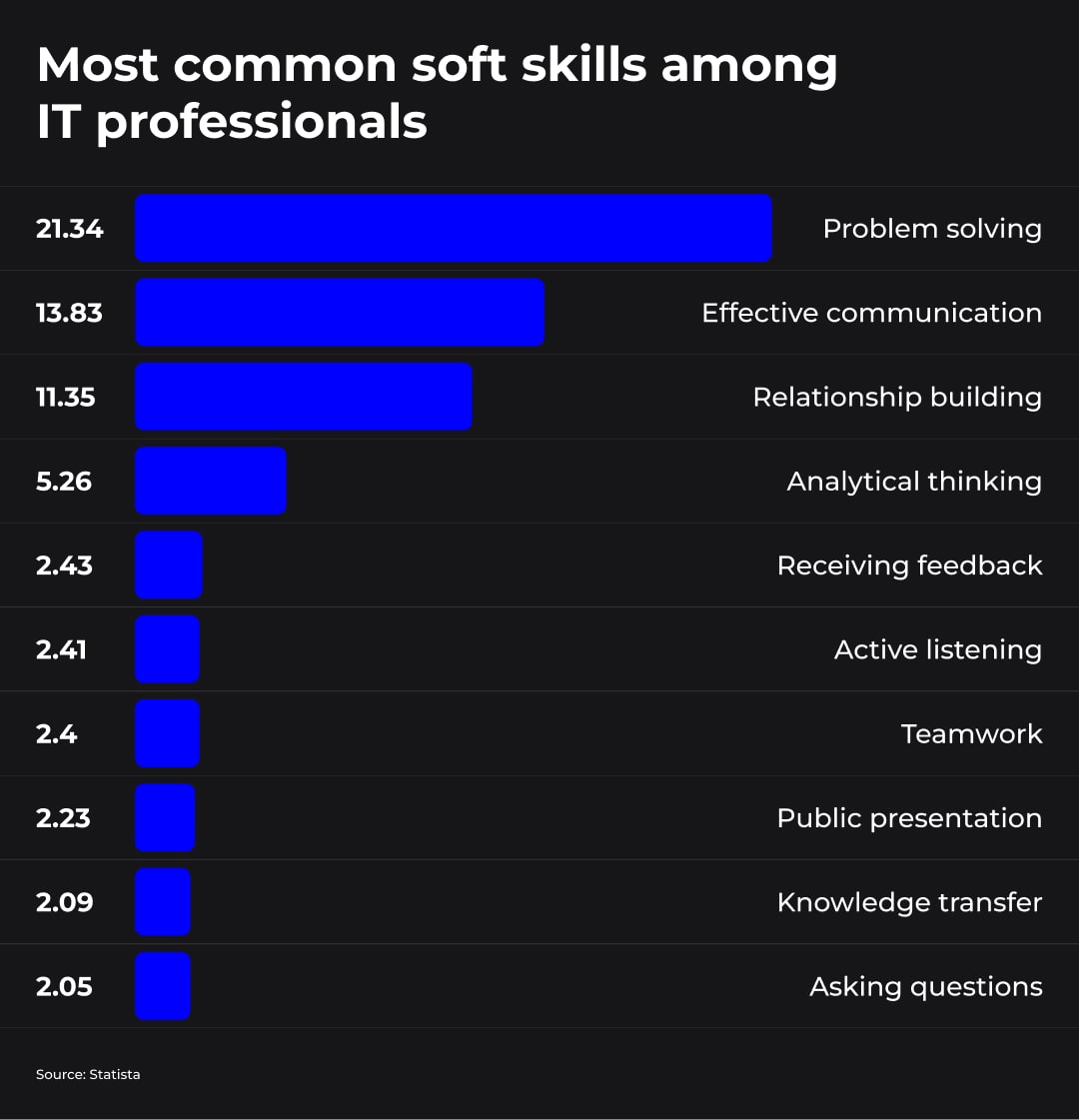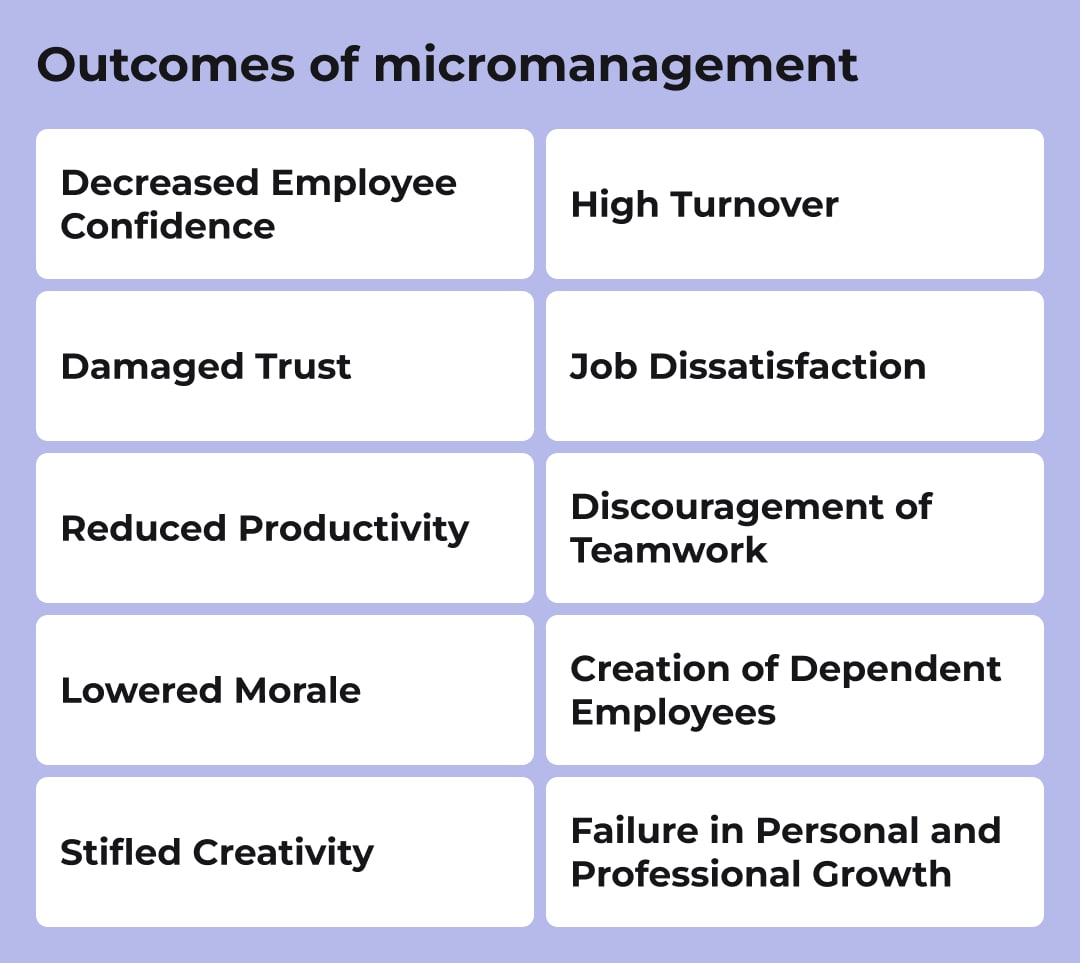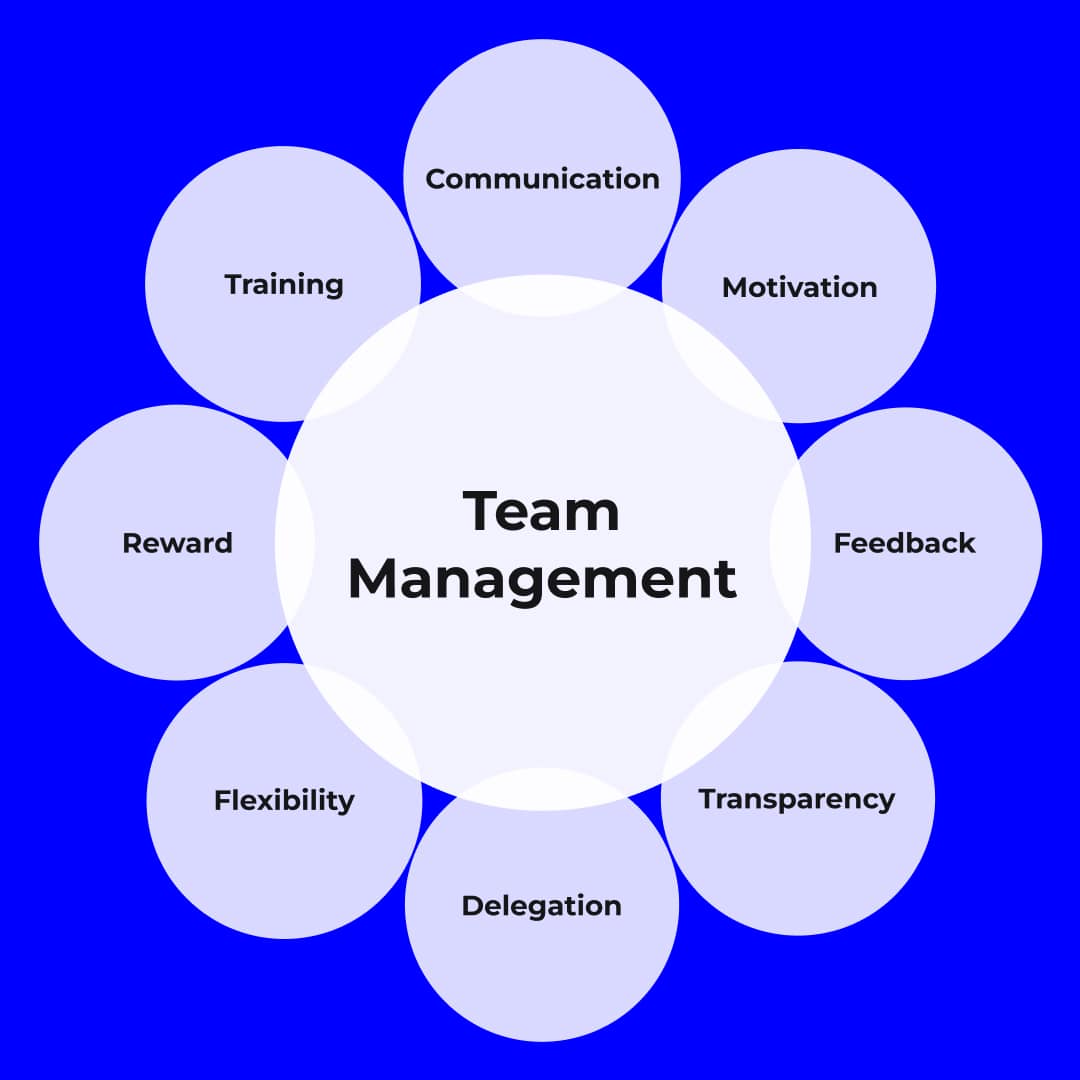As you know, the tech industry is full of burning deadlines and inefficient workflows. Managing remote teams comes with extra challenges, making it essential to have a well-structured plan for IT workforce planning and clear communication methods.
In this article, we’ll cover essential remote team management tips. From trust to structuring roles, we'll highlight how these details can contribute to your operations. We'll focus on how improving communication and retaining top talent in your technology teams can bring a difference.
Here’s how you can create a motivated and high-performing team.
The Foundations of a High-Performing Tech Team
What do we usually mean by managing technical teams effectively? This process starts with defining clear roles and strategic hiring. We build leadership structures that then support innovation. Without these, even the best tech professionals struggle with misalignment and inefficiency.
Talking About Roles and Responsibilities
Clarity is what eliminates confusion and keeps work moving efficiently. We don't define roles with details until we start managing duplicated tasks and slipping responsibilities through the cracks. No wonder productivity in such teams drops.
A strong team needs both generalists and specialists. Generalists bring flexibility, while specialists provide deep technical knowledge. Striking the right balance ensures adaptability without sacrificing expertise.
Hiring for More Than Just Technical Skills

Purely technical skills are not the only asset businesses look for in tech positions. Statista mentions a plethora of soft skills that a developer is expected to have. Problem-solving, communication, and relationship building have become as important. This is especially actual in remote teams where collaboration happens across time zones.
Such behaviors define how quickly a developer will be able to accomplish the project within the timelines, how successful they will be to find a needed solution. That’s why beyond hard skills, you should also look at how well someone fits into your team’s work style and culture.
In search of increasing long-term retention and reducing hiring mistakes, you can address to a recruiting agency. With extensive expertise in the industry, they will help you hire software developers who are technically strong and work well within your team.
Need to define a specific role and attract the perfect candidate? Our team of experts can help you with that.
Drop us a note
Avoiding the Developer-to-Manager Trap
Not every senior developer wants to be a manager. Leading technical teams effectively means recognizing that forcing developers into management roles they don’t want leads to disengagement and lost technical expertise.
Instead of forcing management as the only career path, offer dual tracks. Suggest one path in leadership direction and another one in technical growth. Senior engineers can move into various tech roles without taking on people management.
Remember that as you keep developers doing what they like to do – coding and innovating, you get higher job satisfaction. This leads to better retention and stronger team performance.
Leading and Motivating Tech Teams Without Micromanaging
Developers perform best when given autonomy, clear expectations, and the right tools—without unnecessary oversight. Strong team management strategies ensure progress by focusing on leadership and support rather than excessive control.
Trust Over Control: Why Micromanagement Fails

Micromanagement is the fastest way to ruin motivation. Effective leadership in technology fosters a trust-based environment, leading to 74% less stress, 50% higher productivity, and 40% lower burnout rates. On the other hand, excessive control, constant status updates, and rigid oversight lead to disengagement and high turnover.
Set expectations without micromanaging:
Focus on outcomes over hours—measuring performance by results rather than how often someone is online.
Use project management tools to track progress without unnecessary check-ins.
Encourage peer accountability so the team self-manages minor blockers before escalating them.
Effective Communication Strategies for Engineers
Technical professionals thrive when communication is structured but not excessive. Too many meetings disrupt deep work, while too few leave teams disconnected.
Ask the right questions to get meaningful feedback
What do you need to be most productive?
Are you challenged by your project?
What obstacles are slowing you down?
Most developers have answers to these questions, but managers often don’t ask them. Regular but focused one-on-one check-ins create an open dialogue without adding unnecessary meetings.
The right communication balance
Limit status meetings—replace them with asynchronous tech communication using tools like Slack, Jira, or Notion.
Encourage structured problem-solving discussions rather than long, unfocused calls.
Use collaboration tools like Loom and Miro to streamline technical explanations.
Building Resilient and Adaptable Tech Teams
Managing technical teams isn’t just about maintaining current performance—it’s about ensuring they can handle future challenges, evolve with industry changes, and stay engaged long-term.
Future-Proofing Skills with Continuous Learning
Stagnation leads to disengagement. Almost half of tech professionals (47%) say they consider learning opportunities when choosing their next role. If your team isn't growing, they're either falling behind or looking for new jobs.
Internal training ensures company-specific knowledge stays in-house, while external courses keep teams updated on industry-wide innovations. A mix of both is ideal.
Addressing Burnout Before It Leads to Attrition
Burnout is a major issue in tech, especially in remote teams where work-life boundaries blur. Common early signs include decreased responsiveness, lower quality output, and a shift in attitude.
Structuring Workflows for Maximum Productivity

A well-structured workflow reduces inefficiencies, improves collaboration, and ensures projects move forward without delays.
Choosing the Right Development Framework
There’s no one-size-fits-all method, but choosing the right framework can make or break a project.
Agile works best for iterative development and evolving requirements.
Scrum suits teams that need structure with defined sprints and retrospectives.
Kanban helps teams optimize workflow by visualizing tasks and reducing bottlenecks.
Hybrid approaches mix elements from multiple frameworks to fit specific team needs.
Managing Technical Debt Without Slowing Innovation
Technical debt builds up when teams cut corners to meet deadlines. Over time, it slows development, increases bugs, and makes scaling harder.
How to reduce it without derailing progress
Allocate dedicated tech debt sprints every quarter.
Ensure developers document trade-offs, so future teams know what needs refactoring.
Scaling Your Tech Team Without Compromising Quality
Scaling doesn't only suppose hiring more people. It means growing in a way that keeps quality high, workflows smooth, and culture intact.
Retention Strategies That Keep Top Tech Talent Engaged
Developers love solving complex challenges, removing blockers, and improving efficiency. Recognizing their contributions in a way that benefits both the individual and the team boosts engagement and retention.
Incentives that actually work
Monetary bonuses tied to problem-solving contributions.
Public recognition for impactful fixes, not just for closing the most tickets.
Special perks, such as extra learning budgets or conference passes.
Data-backed impact: most professionals say career growth is the most valuable reward for their contributions. A well-structured recognition system boosts morale, drives collaboration, and strengthens retention.
Today’s engineers expect: autonomy, learning opportunities, and leadership that listens. Companies that get this right don’t just attract talent—they reduce tech turnover and build long-term engagement.
Closing Insights: Building Teams That Last
Managing technical teams isn’t about control. It’s about creating an environment where developers can do their best work. When you focus on trust, structured workflows, learning, and retention, your team becomes more than just productive. It becomes a key driver of innovation and business success.
Looking to scale and build a successful team? Outstaff Your Team has experience with this.
Book your free consultation with us!
FAQ
What are the best remote team management tips for technology teams?
Effective remote team management tips include setting clear roles, prioritizing async communication, and focusing on outcomes over hours. Use Agile workflows, minimize meetings, and leverage collaboration tools. Build trust by avoiding micromanagement and recognizing contributions.
How can businesses improve collaboration in remote technology teams?
To improve collaboration in remote technology teams, businesses should establish clear workflows, encourage knowledge sharing, and use the right tools. Structured documentation, updates, and regular team check-ins help maintain alignment. Investing in collaborative platforms and fostering a culture of trust ensures seamless teamwork across locations.
What are the biggest challenges in managing technical teams?
The biggest challenges in managing technical teams include balancing workloads, preventing burnout, and keeping up with rapid tech changes. Retaining top talent and ensuring career growth are also key obstacles, requiring strong leadership and structured development plans.
Ann Kuss is the CEO at Outstaff Your Team. After 11 years of expertise in building remote tech teams for startup unicorns and global tech brands, Ann decided to lead a new venture aiming to reinvent the way international tech teams scale. Throughout her career, Ann hired specialists for countless tech positions from more than 17 countries on all major continents. Ann graduated from Kyiv-Mohyla business school, is an MIM Kyiv alumna, and regularly takes part in mentorship programs for junior tech talents. Ann actively promotes knowledge sharing and curates Outstaff Your Team blog strategy, preferring topics that solve practical needs of IT leaders. She believes that structuring business flows (including hiring) is a well-planned journey with predictable and successful outcome.



